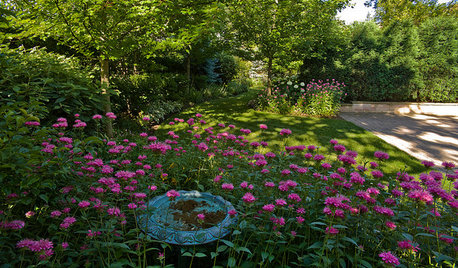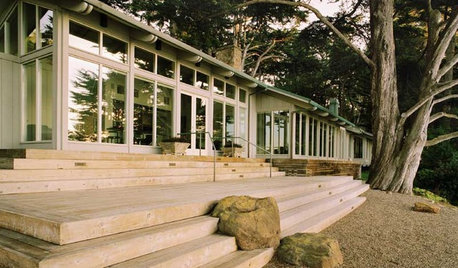Lawn care manual
lawnsanity
10 years ago
Related Stories

GREAT HOME PROJECTSHow to Replace Your Lawn With a Garden
New project for a new year: Lose the turfgrass for energy savings, wildlife friendliness and lower maintenance
Full Story
FRONT YARD IDEASBefore and After: Front Lawn to Prairie Garden
How they did it: Homeowners create a plan, stick to it and keep the neighbors (and wildlife) in mind
Full Story
GROUND COVERSGive Your Lawn a Taste of the Wild
Consider the joys of an irregularly trimmed meadow lawn: It’s ecofriendly, visually interesting and still good for romping
Full Story
GRASSESHow to Rock a Lawn
Weekend Project: The key to healthy grass begins with the soil. If turf works for you, here’s how to fix it and keep it looking its best
Full Story
LANDSCAPE DESIGN7 Low-Maintenance Lawn Alternatives
Turf isn't the only ground cover in town. Get a lush no-grass lawn with clover, moss and other easy-care plants
Full Story
COMMUNITYWant a Cleaner, Safer Neighborhood? Show You Care
Our behavior strongly influences others, says a new study. Show neighbors you care about your street and watch them follow suit
Full Story
ORGANIZING6 Ways to Care for Your Washing Machine
Keep your laundry room and clothes in great shape with these basic washing machine tips
Full Story
LANDSCAPE DESIGNExuberant Self-Seeders for Gorgeous, Easy-Care Gardens
Keep weeds down, color high and maintenance low with beautful plants that sow themselves
Full Story
GARDENING GUIDESTree Care: Common Tree Diseases and What to Do About Them
Learn to recognize trees that may be affected by diseases or pests so you can quickly take action
Full StoryMore Discussions









dchall_san_antonio
grass1950
Related Professionals
New Bedford Landscape Architects & Landscape Designers · Deer Park Landscape Architects & Landscape Designers · West Chester Landscape Architects & Landscape Designers · Allentown Landscape Contractors · Dinuba Landscape Contractors · Leicester Landscape Contractors · Merced Landscape Contractors · Monterey Landscape Contractors · Pleasant Grove Landscape Contractors · Teaneck Landscape Contractors · Markham Landscape Contractors · La Verne Swimming Pool Builders · Newman Swimming Pool Builders · Palos Verdes Estates Swimming Pool Builders · Sacramento Swimming Pool BuilderslawnsanityOriginal Author
grass1950
dchall_san_antonio
ethanhhgeorge
HamsterHuey